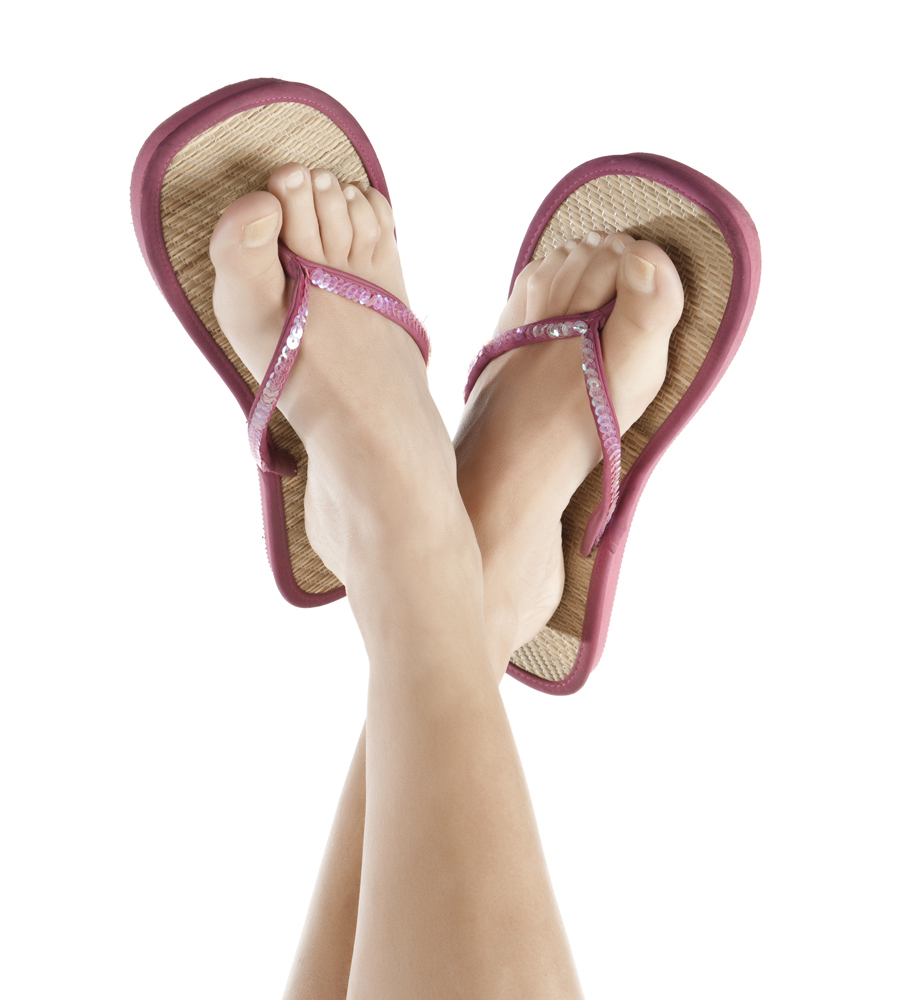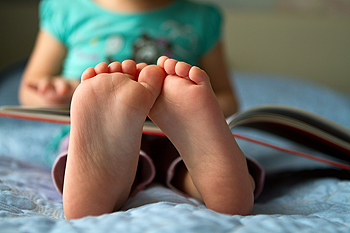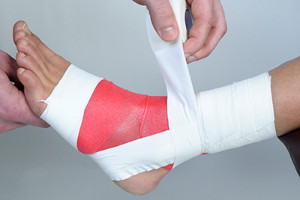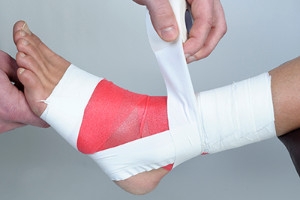Super User
All About Plantar Warts
Plantar warts are warts that are only found on the feet, hence the term “plantar”, which means “relating to the foot.” They are caused by the human papillomavirus, or HPV, and occur when this virus gets into open wounds on the feet. The warts themselves are hard bumps on the foot. They are easily recognizable, mostly found on the heels or ball of the foot. Plantar warts are non-malignant, but they can cause some pain, discomfort, and are often unsightly. Removing them is a common step toward treating them.
Plantar warts can cause some pain while standing, sometimes felt as tenderness on the sole of your foot. Unless the wart has grown into the foot behind a callus, you will be able to see the fleshy wart. A podiatrist should only be consulted if there is an excessive amount of pain. Plantar warts are not cancerous or dangerous, but they can affect your walking and continually reappear. Anyone who suffers from diabetes or a compromised immune system disease should seek out care immediately.
Podiatrists are easily able to diagnose plantar warts. They usually scrape off a tiny bit of the rough skin to make tiny blood clots visible and examine the inside of warts. However, a biopsy can be done if the doctor is not able to diagnose them from simply looking at them. Although plantar warts usually do not require an excessive amount of treatment, there are ways to go about removing them. A common method is to freeze them off using liquid nitrogen, removing them using an electrical tool, or burning them off via laser treatment. For a less invasive treatment option, topical creams can be used through a doctor’s prescription. This treatment method takes more time, however. Keep the wart covered for protection in between daily treatments.
The best way to avoid developing plantar warts is to avoid walking barefoot in public places. Avoid this especially if you have open sores or cuts on your feet. It is also important to avoid direct contact with warts in general, as they are highly contagious.
Possible Foot Pain May Come from Wearing Flip-Flops
 Flip-flops are a popular shoe to wear during the summer months, despite the damage that may occur to your feet. It is a natural reaction to clench your toes to help keep the shoe on the foot, and this may gradually change the way you walk. The muscles in the feet and calves may be affected, and this can lead to having sharp pains in the heel. Research has indicated that it may be acceptable to wear flip-flops occasionally, and this may limit any potential damage the feet may receive. If you generally walk for long distances, it is best to wear a sandal that has a strap on the back to help keep the shoe on the foot. If you would like additional information on how flip-flops may affect the feet, speak to a podiatrist who can answer any questions you may have.
Flip-flops are a popular shoe to wear during the summer months, despite the damage that may occur to your feet. It is a natural reaction to clench your toes to help keep the shoe on the foot, and this may gradually change the way you walk. The muscles in the feet and calves may be affected, and this can lead to having sharp pains in the heel. Research has indicated that it may be acceptable to wear flip-flops occasionally, and this may limit any potential damage the feet may receive. If you generally walk for long distances, it is best to wear a sandal that has a strap on the back to help keep the shoe on the foot. If you would like additional information on how flip-flops may affect the feet, speak to a podiatrist who can answer any questions you may have.
Flip-flops can cause a lot of problems for your feet. If you have any concerns about your feet or ankles, contact one of our podiatrists from Westside Podiatry Center, LLP. Our doctors will assist you with all of your foot and ankle needs.
Flip-Flops and Feet
Flip-flops have managed to become a summer essential for a lot of people. While the shoes may be stylish and easy to slip on and off, they can be dangerous to those who wear them too often. These shoes might protect you from fungal infections such as athlete’s foot, but they can also give you foot pain and sprained ankles if you trip while wearing them.
When Are They Okay to Wear?
Flip-flops should only be worn for very short periods of time. They can help protect your feet in places that are crawling with fungi, such as gym locker rooms. Athlete’s foot and plantar warts are two common fungi that flip-flops may help protect your feet against.
Why Are They Bad for My Feet?
These shoes do not offer any arch support, so they are not ideal for everyday use. They also do not provide shock absorption or heel cushioning which can be problematic for your feet. Additionally, you may suffer from glass cuts, puncture wounds, and stubbed toes since they offer little protection for your feet.
More Reasons Why They Are Bad for Your Feet
- They Slow You Down
- May Cause Blisters and Calluses
- Expose Your Feet to Bacteria
If you have any questions, please feel free to contact one of our offices located in Liverpool, Camillus, Skaneateles, Oswego, and Cicero, NY . We offer the newest diagnostic and treatment technologies for all your foot care needs.
Flipping Out About Flip Flops
Although it may be tempting to wear flip-flops in warm weather, they are not the best choice of footwear for your feet. Flip-flops may be ideal for the beach, pool, spa, and shared showers, but you should avoid wearing them unless it is completely necessary.
Flip-flops only have a small strip of fabric holding your foot in place, but your toes need a better grip to keep your foot in place. The repetitive gripping can lead to an overuse of your muscles, which could result in tendinitis. This is only one of the many problems that stem from wearing flip-flops too often.
Flip flops aren’t good for extensive walking because they fail to offer arch support, heel cushioning, or shock absorption. As a result, people who wear flip flops are at a higher risk of experiencing an ankle sprain. Additionally, these shoes offer little protection for your feet, putting those who wear them at a greater risk for stubbed toes, glass cuts, and puncture wounds.
Although flip flops aren’t recommended for everyday use by anyone, it is especially important for diabetics to avoid them. A diabetic foot injury can easily become very serious, and it may even lead to amputation.
If you are experiencing pain from wearing flip-flops, you shouldn’t be hesitant to replace them with a more comfortable shoe that offers more support. If your flip-flop foot pain doesn’t go away, you should seek assistance from a podiatrist right away. It is possible that you may have a more serious foot problem such as a stress fracture or arthritis.
Understanding Morton’s Neuroma
 Morton’s neuroma, also known as Morton’s metatarsalgia, is caused by the irritation or thickening of a nerve in the foot. The irritation of this nerve causes pain in between toes or on the ball of the foot. In extreme cases, the pain can sometimes affect mobility and is most commonly felt between the third and fourth toes. The symptoms usually begin as a tingling feeling that gradually escalates to sharp, shooting, or burning pain. When pressure is put on the foot, pain or discomfort usually increases. Physical activities and wearing tight-fitting shoes can therefore worsen symptoms. It is best to let an afflicted foot rest if symptoms occur, because rest and proper footwear can help ease the pain. If you believe you have Morton’s neuroma or have similar symptoms, speak with your podiatrist to learn about treatment options.
Morton’s neuroma, also known as Morton’s metatarsalgia, is caused by the irritation or thickening of a nerve in the foot. The irritation of this nerve causes pain in between toes or on the ball of the foot. In extreme cases, the pain can sometimes affect mobility and is most commonly felt between the third and fourth toes. The symptoms usually begin as a tingling feeling that gradually escalates to sharp, shooting, or burning pain. When pressure is put on the foot, pain or discomfort usually increases. Physical activities and wearing tight-fitting shoes can therefore worsen symptoms. It is best to let an afflicted foot rest if symptoms occur, because rest and proper footwear can help ease the pain. If you believe you have Morton’s neuroma or have similar symptoms, speak with your podiatrist to learn about treatment options.
Morton’s neuroma is a very uncomfortable condition to live with. If you think you have Morton’s neuroma, contact one of our podiatrists of Westside Podiatry Center, LLP. Our doctors will attend to all of your foot care needs and answer any of your related questions.
Morton’s Neuroma
Morton's neuroma is a painful foot condition that commonly affects the areas between the second and third or third and fourth toe, although other areas of the foot are also susceptible. Morton’s neuroma is caused by an inflamed nerve in the foot that is being squeezed and aggravated by surrounding bones.
What Increases the Chances of Having Morton’s Neuroma?
- Ill-fitting high heels or shoes that add pressure to the toe or foot
- Jogging, running or any sport that involves constant impact to the foot
- Flat feet, bunions, and any other foot deformities
Morton’s neuroma is a very treatable condition. Orthotics and shoe inserts can often be used to alleviate the pain on the forefront of the feet. In more severe cases, corticosteroids can also be prescribed. In order to figure out the best treatment for your neuroma, it’s recommended to seek the care of a podiatrist who can diagnose your condition and provide different treatment options.
If you have any questions, please feel free to contact one of our offices located in Liverpool, Camillus, Skaneateles, Oswego, and Cicero, NY . We offer the newest diagnostic and treatment technologies for all your foot care needs.
Morton's Neuroma
A neuroma is a thickening of nerve tissue and can develop throughout the body. In the foot, the most common neuroma is a Morton’s neuroma; this typically forms between the third and fourth toes. The thickening of the nerve is typically caused by compression and irritation of the nerve; this thickening can in turn cause enlargement and, in some cases, nerve damage.
Neuromas can be caused by anything that causes compression or irritation of the nerve. A common cause is wearing shoes with tapered toe boxes or high heels that force the toes into the toe boxes. Physical activities that involve repeated pressure to the foot, such as running or basketball, can also create neuromas. Those with foot deformities, such as bunions, hammertoes, or flatfeet, are more likely to develop the condition.
Symptoms of Morton’s neuroma include tingling, burning, numbness, pain, and the feeling that either something is inside the ball of the foot or that something in one’s shoe or sock is bunched up. Symptoms typically begin gradually and can even go away temporarily by removing one’s shoes or massaging the foot. An increase in the intensity of symptoms correlates with the increasing growth of the neuroma.
Treatment for Morton’s neuroma can vary between patients and the severity of the condition. For mild to moderate cases, padding, icing, orthotics, activity modifications, shoe modifications, medications, and injection therapy may be suggested or prescribed. Patients who have not responded successfully to less invasive treatments may require surgery to properly treat their condition. The severity of your condition will determine the procedure performed and the length of recovery afterwards.
Why Does My Child Have Flat Feet?
 A child’s foot will typically change shape as the aging process occurs. Most babies are born with flat feet, and the arch will be fully developed at approximately eighteen years of age. When children begin to walk, their feet may become less flexible as the bones become stronger. Research has indicated that it may be beneficial for young children to walk barefoot indoors as often as possible. This may help the feet to develop adequate muscle tone and strength. It is important to wear shoes while walking outdoors, and this may aid in protecting the soles of the feet. After the correct size is determined by properly measuring the feet, the first pair of shoes can be purchased. They should consist of adequate cushioning that will provide maximum stability. Additionally, if the shoes are made of a breathable material, they may provide the flexibility that is needed to easily walk. If you have questions about your children’s feet, please speak to a podiatrist who can answer any questions you may have.
A child’s foot will typically change shape as the aging process occurs. Most babies are born with flat feet, and the arch will be fully developed at approximately eighteen years of age. When children begin to walk, their feet may become less flexible as the bones become stronger. Research has indicated that it may be beneficial for young children to walk barefoot indoors as often as possible. This may help the feet to develop adequate muscle tone and strength. It is important to wear shoes while walking outdoors, and this may aid in protecting the soles of the feet. After the correct size is determined by properly measuring the feet, the first pair of shoes can be purchased. They should consist of adequate cushioning that will provide maximum stability. Additionally, if the shoes are made of a breathable material, they may provide the flexibility that is needed to easily walk. If you have questions about your children’s feet, please speak to a podiatrist who can answer any questions you may have.
The health of a child’s feet is vital to their overall well-being. If you have any questions regarding foot health, contact one of our podiatrists of Westside Podiatry Center, LLP. Our doctors can provide the care you need to keep you pain-free and on your feet.
Tips for Keeping Children's Feet Healthy
- Make sure their shoes fit properly
- Look for any signs of in-toeing or out-toeing
- Check to see if they have Clubfoot (condition that affects your child’s foot and ankle, twisting the heel and toes inward) which is one of the most common nonmajor birth defects.
- Lightly cover your baby’s feet (Tight covers may keep your baby from moving their feet freely, and could prevent normal development)
- Allow your toddler to go shoeless (Shoes can be restricting for a young child’s foot)
- Cut toenails straight across to avoid ingrown toenails
- Keep your child’s foot clean and dry
- Cover cuts and scrapes. Wash any scratches with soap and water and cover them with a bandage until they’ve healed.
If you have any questions, please feel free to contact one of our offices located in Liverpool, Camillus, Skaneateles, Oswego, and Cicero, NY . We offer the newest diagnostic and treatment technologies for all your foot care needs.
What to Do to Keep Your Child’s Feet Healthy
Being a parent involves caring for your child in every way you can. You make sure they are eating the right food, being nice to others, and staying out of any trouble. However, it is also important that you are watchful of their health, more specifically their foot health. Maintaining good foot health in childhood is important in preventing later conditions in life from happening. As children continue to develop, their feet require different techniques of care. Here are some various ways in which you can help your child’s feet stay healthy.
A baby needs a lot of care and attention overall, but the importance of their feet should never be forgotten. Before a baby turns one, their feet change and develop greatly. It is important that during this time, a mother avoids putting tight socks on their child. She should also encourage movement of their feet so the baby can begin to feel more comfortable using them.
As a baby enters the toddler years of his or her life, they are begin to walk around. When your baby begins to take those first steps, it is crucial that they are wearing protective shoes on their feet. As a mother that is observant of your child’s feet, you may notice changes in them. This is completely normal as the feet are becoming susceptible to the activity of walking. It is normal for a toddler to be a bit unsteady or to “walk funny” at first.
When your child grows out of their toddler years, it is important that you begin to show him or her how to care for their feet on their own. Practice with your child proper hygiene in order to prevent foot fungus or infection. Since children are constantly on the move, it is crucial to be cautious of any accidents or injuries that might occur. If an injury occurs, it is advised that you take your child to be examined by a doctor immediately. Since your child is still growing, particular injuries can shift the way in which a bone or other important part of the foot is developing.
Babies and kids are always changing and growing. Your job as a parent is to make sure they stay healthy and making sure they are properly maintained. This involves proper foot care and making sure the feet stay healthy. Following this guide, your child can live a long and happy life.
What Causes Ankle Pain?
 There are different forms of ankle pain, and they can occur for a variety of different reasons. For example, an ankle sprain is a common injury that can happen as a result of falling and twisting the ankle. The ligaments can tear or stretch, and this generally causes severe pain and discomfort. If the joints surrounding the ankle become inflamed, a condition known as arthritis may be present. The most common forms of this condition are rheumatoid arthritis and osteoarthritis. Additionally, gout is a painful condition that affects the big toe primarily, but can affect the ankle as well. It can occur as a result of specific foods that are eaten. Some patients develop tendonitis in the ankle, which can cause difficulty in moving the lower portion of the foot. If you are experiencing ankle pain for any reason, it is advised to speak to a podiatrist who can guide you toward beginning the correct treatment.
There are different forms of ankle pain, and they can occur for a variety of different reasons. For example, an ankle sprain is a common injury that can happen as a result of falling and twisting the ankle. The ligaments can tear or stretch, and this generally causes severe pain and discomfort. If the joints surrounding the ankle become inflamed, a condition known as arthritis may be present. The most common forms of this condition are rheumatoid arthritis and osteoarthritis. Additionally, gout is a painful condition that affects the big toe primarily, but can affect the ankle as well. It can occur as a result of specific foods that are eaten. Some patients develop tendonitis in the ankle, which can cause difficulty in moving the lower portion of the foot. If you are experiencing ankle pain for any reason, it is advised to speak to a podiatrist who can guide you toward beginning the correct treatment.
Ankle pain can be caused by a number of problems and may be potentially serious. If you have ankle pain, consult with one of our podiatrists from Westside Podiatry Center, LLP. Our doctors will assess your condition and provide you with quality foot and ankle treatment.
Ankle pain is any condition that causes pain in the ankle. Due to the fact that the ankle consists of tendons, muscles, bones, and ligaments, ankle pain can come from a number of different conditions.
Causes
The most common causes of ankle pain include:
- Types of arthritis (rheumatoid, osteoarthritis, and gout)
- Ankle sprains
- Broken ankles
- Achilles tendinitis
- Achilles tendon rupture
- Stress fractures
- Bursitis
- Tarsal tunnel syndrome
- Plantar fasciitis
Symptoms
Symptoms of ankle injury vary based upon the condition. Pain may include general pain and discomfort, swelling, aching, redness, bruising, burning or stabbing sensations, and/or loss of sensation.
Diagnosis
Due to the wide variety of potential causes of ankle pain, podiatrists will utilize a number of different methods to properly diagnose ankle pain. This can include asking for personal and family medical histories and of any recent injuries. Further diagnosis may include sensation tests, a physical examination, and potentially x-rays or other imaging tests.
Treatment
Just as the range of causes varies widely, so do treatments. Some more common treatments are rest, ice packs, keeping pressure off the foot, orthotics and braces, medication for inflammation and pain, and surgery.
If you have any questions, please feel free to contact one of our offices located in Liverpool, Camillus, Skaneateles, Oswego, and Cicero, NY . We offer the newest diagnostic and treatment technologies for all your foot care needs.
Ankle Pain
Pain experienced in the ankle can be caused by a multitude of conditions. While the most common cause is an ankle sprain, other possible problems can include arthritis, gout, ankle instability, an ankle fracture, nerve compression, or tendinitis. In more serious cases, ankle pain can be a sign of improper alignment of the foot or an infection.
Ankle pain can often be accompanied by symptoms such as redness, swelling, stiffness, and warmth in the affected area. Pain can be described differently depending on the condition: short, stabbing pain and a dull ache are some examples. If such symptoms are persistent and do not improve after time, be sure to schedule an appointment with your local podiatrist.
Depending on the condition causing your ankle pain, different treatments may be prescribed by your podiatrist. For ankle sprains, the first step in treatment involves rest, ice, elevation, and compression. Be sure to avoid placing pressure on the ankle, use an ice pack several times a day, and use a compression bandage and elevation to reduce swelling. Other, more serious conditions may require the assistance of certain drugs and medications such as nonsteroidal anti-inflammatory drugs (NSAIDs), physical therapy, or even cortisone injections.
Depending on the severity of your ankle pain and the condition behind it, recovery from ankle pain may take some time.
Consult with your foot and ankle doctor to best determine the cause of your ankle pain and the appropriate treatment.
Mandatory Education Required for Podiatrists
 People who are interested in treating disorders of the feet and ankles may consider a career as a podiatrist. They are referred to as Doctors of Podiatric Medicine, and often have the initials DPM following their name. Many podiatrists are able to perform specific types of surgery to correct foot and ankle conditions, in addition to prescribing medicine. Mandatory education consists of achieving a bachelor's degree, followed by enrolling in a college of podiatric medicine. It is beneficial to possess certain life skills which can consist of compassion, becoming detail-oriented, and having critical-thinking skills. If you have questions about pursuing this type of career, please consult with a podiatrist who can help you to determine if this is the best choice for you.
People who are interested in treating disorders of the feet and ankles may consider a career as a podiatrist. They are referred to as Doctors of Podiatric Medicine, and often have the initials DPM following their name. Many podiatrists are able to perform specific types of surgery to correct foot and ankle conditions, in addition to prescribing medicine. Mandatory education consists of achieving a bachelor's degree, followed by enrolling in a college of podiatric medicine. It is beneficial to possess certain life skills which can consist of compassion, becoming detail-oriented, and having critical-thinking skills. If you have questions about pursuing this type of career, please consult with a podiatrist who can help you to determine if this is the best choice for you.
If you are experiencing pain in the feet or ankles, don’t join the stubborn majority refusing treatment. Feel free to contact one of our podiatrists from Westside Podiatry Center, LLP. Our doctors can provide the care you need to keep you pain-free and on your feet.
What Is a Podiatrist?
Someone would seek the care of a podiatrist if they have suffered a foot injury or have common foot ailments such as heal spurs, bunions, arch problems, deformities, ingrown toenails, corns, foot and ankle problems, etc.
Podiatric Treatment
A podiatrist will treat the problematic areas of the feet, ankle or lower leg by prescribing the following:
- Physical therapy
- Drugs
- Orthotic inserts or soles
- Surgery on lower extremity fractures
A common podiatric procedure a podiatrist will use is a scanner or force plate which will allow the podiatrist to know the designs of orthotics. Patients are then told to follow a series of tasks to complete the treatment. The computer will scan the foot a see which areas show weight distribution and pressure points. The podiatrist will read the analysis and then determine which treatment plans are available.
If you have any questions please feel free to contact one of our offices located in Liverpool, Camillus, Skaneateles, Oswego, and Cicero, NY . We offer the newest diagnostic and treatment technologies for all your foot and ankle needs.





